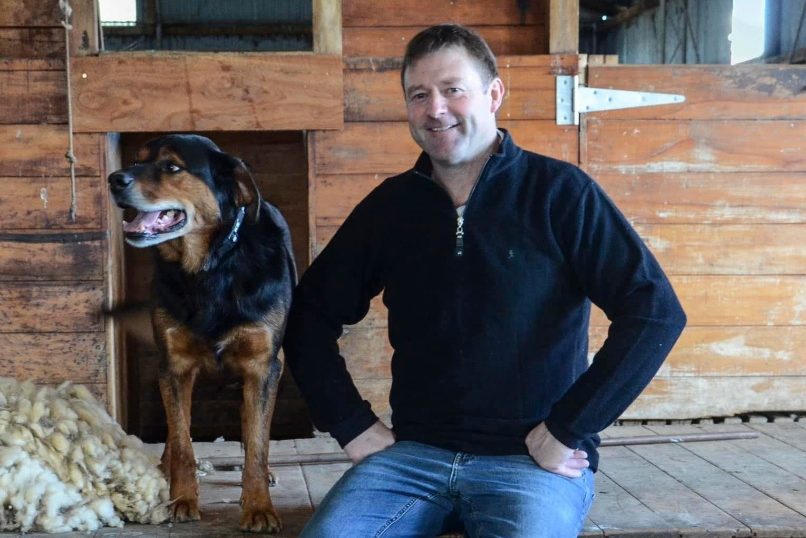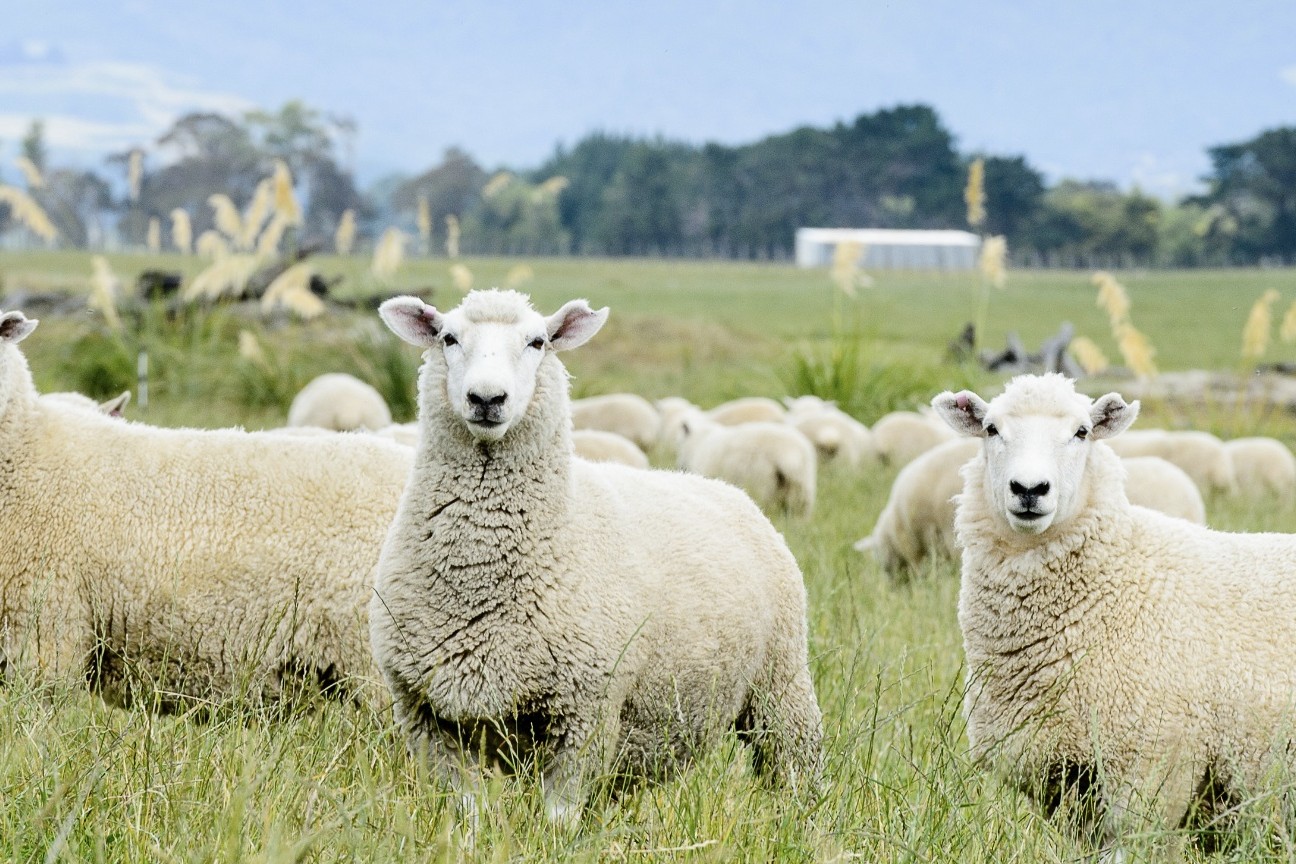‘Minister of Wool’ on a mission
Helping to guide the strong wool industry to greater prosperity is much more than a government role for Associate Agriculture Minister Mark Patterson. It’s personal. Words Tony Leggett, Photos Mark Patterson.

Mark Patterson has a genuine passion for wool and like every strong wool grower in the country is frustrated by two decades of low farm gate prices and disappointed by the lack of progress on building a more viable industry.
But after nearly a year in Government, Patterson says he is pleased by the amount of innovation emerging from companies looking at new end uses for strong wool, and the fresh commitments from existing players.
He has also detected a much greater willingness to collaborate than he has seen in the past. “The global swing back to natural fibres is real, and I’m seeing a lot more innovation to capitalise on that. There are really clever people turning their minds to interesting end uses for strong wool.”
Patterson is also hearing more positive news from wool exporters who are reporting levels of forward orders not seen for several years. “I get the sense there are green shoots. I’m seeing new end-uses coming in the market, like acoustic panelling made from wool, and more interest in wool carpets where companies like Bremworth are really pushing hard at the moment.”
But, he admits, it won’t be real for farmers until the farm gate price of wool is substantially higher than now. Patterson says the government still has a facilitation role to play in the wool sector, but ultimately, he says no industry should be reliant on taxpayer funded investment to achieve long term viability.
“I’ve been clear with businesses and farmers. It’s not what I think, it’s what industry and farmers want from their industry. Our (government) role is a facilitation role, because ultimately, the strategy and the solutions have to come from within the industry, not from the government.”

“However, the fact that I’ve been given a specific delegation for strong wool suggests the Government is serious about it. It’s also not just about wool’s future, it’s the viability of hill country farming too that’s at stake.”
He is loath to pick a farm gate price that signals success for the strong wool industry, preferring to promote a credible target and gives farmers a “line of sight to aim for”.
Patterson says farmers will be weighing up the opportunity to switch from wool growing to one of the shedding breeds. He says there is a case for shedding sheep, but farmers could also miss a genuine upswing in strong wool prices.
The significant loss of sheep (and beef) stock units to pines is also hitting home. He points to the recent $50 million investment in efficient scouring technology made by Woolworks at its Awatoto site in Hawke’s Bay. “They see pines and shedding sheep, and know their business won’t be sustainable without sheep farming in our hill country so that’s a big motivation for them to invest wisely.”
Another positive step is the Bill requiring government departments to prefer woollen fibres in their buildings which is about to be introduced at Parliament. “It’s taking longer than I would like to get it there, but it’s something tangible that farmers can be pleased about and the (carpet) industry is already picking up on it too.”
Patterson says the government is helping facilitate the development of a commercial strategy aimed at creating a sustainable, viable wool industry. The work is being led by Wool Impact, the government and industry co-funded entity led by Andy Caughey for the past three years.
A reference group of farmers has also been formed, representing the Wool Research Organisation of NZ (WRONZ), Beef + Lamb New Zealand, Federated Farmers, Campaign for Wool and Wool Impact, plus a small sub-group of farmers who will provide feedback to the reference group on the impacts behind the farm gate. An important role for the reference group will be to provide a single voice to advocate for the industry which Patterson says has been lacking for many years. “There are a lot of entities that have a finger nail on the steering wheel but nobody is really mandated to speak on behalf of the entire industry, so we need to re-establish that now,” he says.

He is regularly asked by farmers and wool industry representatives about accessing the $30m of Wool Board levy funds held by WRONZ to put into speeding up the strategy development and roll out. “It is a fair question too. Farmers see it’s their money put aside as a rainy day fund, and it sure is a rainy day.”
However, Patterson says WRONZ is constrained by its constitution to how and where it can invest from that fund.
He is content with Wool Impact’s progress since being formed in 2021 and says he expects it will seek further funding from the Ministry for Primary Industries to continue its work after the current commitment ends mid-2025.
He feels Wool Impact’s work has not been well understood, particularly by farmers, and says that is partly because of its “own communication style” which is low-key. “They have attacked the problem of growing demand from new uses and global brands that can sustain a viable farm gate price.
“But they haven’t landed a big one yet, and farmers are impatient for that silver bullet. They (farmers) are probably sick of hearing talk and want actual deals done.”
Behind the scenes, Patterson says they have been a valuable contributor to linking up brands to local manufacturers and industry. He also has praise for Wool Impact’s work in supporting trade negotiations, industry training and its advocacy for wool, more recently in closer collaboration with Campaign for Wool.
‘I’m much more hopeful about the industry than I expected I would be when I came into this role. I have no doubt we can turn prices around but it will take all the pieces to fall into place to do it.’ – Mark Patterson, Associate Agriculture Minister
Patterson also says Wool Impact’s input to generating the Life Cycle Assessment (LCA) of wool is especially significant. An LCA tracks a product (or service) from start-to-finish and considers its environment impacts along the way.
“Getting that LCA work completed will give our wool sector what it needs to really take on synthetics. It really underpins our sustainable fibre story, and I think that work will end up being really pivotal,” he says.
Regardless of MPI’s decision to repeat a level of funding for Wool Impact, Patterson says there is a need for it to make a transition to a fully co-funded model with industry. A priority for Patterson is urging companies to rebuild their manufacturing capacity in NZ to process wool into their end uses.He points to the government’s Regional Infrastructure Fund as a source of funding for a manufacturing rebuild and favours creating hubs where several companies could co-locate to create greater opportunity for collaboration and knowledge sharing.
“I’m much more hopeful about the industry than I expected I would be when I came into this role. I have no doubt we can turn prices around but it will take all the pieces to fall into place to do it.”
In the meantime, Patterson is urging farmers to take pride in their wool clips and remain optimistic about a turnaround in farm gate prices.
Woolshed meetings
Wool’s woes were a regular topic in the series of informal woolshed meetings across New Zealand run by the Coalition Government throughout 2024.
Associate Agriculture Minister Mark Patterson says it was unsurprising that farmers wanted to know what the government is prepared to do about low farm gate prices. “That’s because we’ve got an industry with disparate leadership, so farmers are rightly asking what does the industry need to look like to regain viability for everyone in the value chain,” he says. “There is no doubt, we’re battling a high degree of cynicism on the back of two decades of declining wool prices. There have been lots of false dawns too, so that is a real hurdle.”
“I’ve been one of those farmers feeling exactly that way and I don’t blame them at all. But promising things we cannot deliver on is not the answer because farmers will see through that immediately.”
Several farmers at the woolshed meetings called for more intervention by the government, including setting up the Zespri-type model used in the kiwifruit sector.




